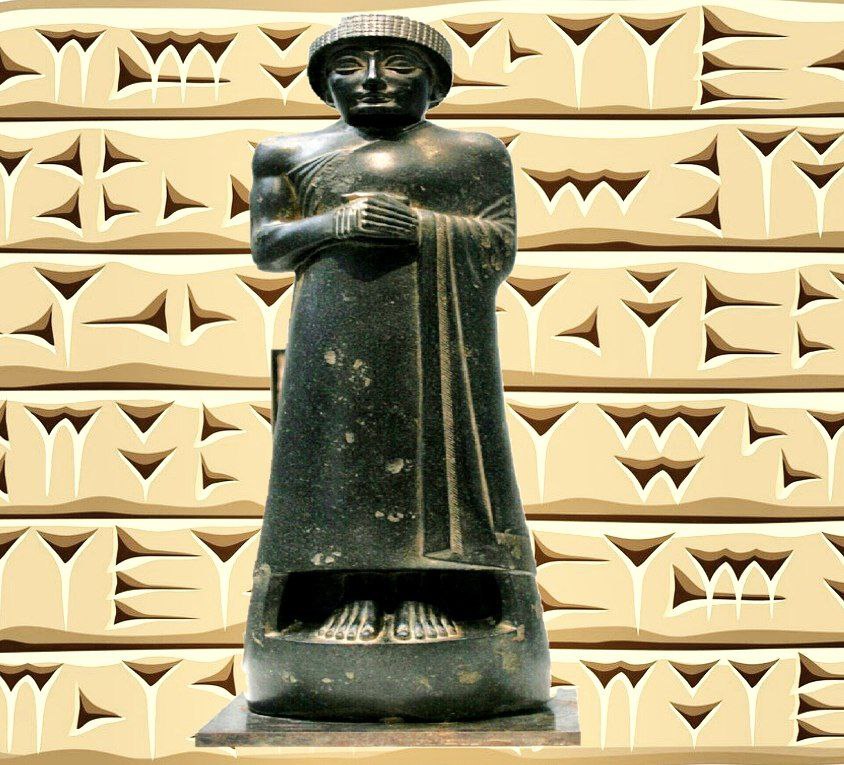NEO-SUMERIAN PERIOD
Unstable condition under the last phase of Guti rule enabled the Sumerians to re-sein their independence. Several of the southern cities reestablished their autonomy, Nd the occupying Guti, shorn of their power and lacking any sort of loyalty, were unable to retain their control. Utu-hengal, ensi of Uruk, dealt the final blow to the Guti by defeating their last King Tirigan and driving them from the country. The power of Utuhengal however did not last long (2116-2110 B.C.) as more cities asserted their independence. Lagash rose as an independent state under such energetic princes as Gudea; and Ur emerged as a strong power under Ur-Nammu, a contemporay of Gudea, who fought and defeated Utu-hengal and occupied Uruk.
Characteristic of the Neo Sumerian Period is the renaissance of Sumerian civilization in all its aspects, harking back to conditions which prevailed before the advent ofthe Akkadians. This Sumerian revival witnessed magnificent architectural undertakings such as the famous ziggurats and temples, and scribal schools saw to it that historical events, legends, and traditions were recorded for posterity. This phase under which come the two dynasties
Second Dynasty of Lagash
This dynasty comprises a number of reigns, outstanding among which is that of Lagash’s famous ensi Gudea, who carried out a grandiose building programme.Gudea (2144-2124 B.C.)
Gudea 𒅗𒌤𒀀 is the 12th king in the dynastic line of Lagash and by far the best known as a result of a series of magnificent diorite statues of him which were unearthed by the French expedition at Telloh.3° Most of these sculptures are now in the possession of the Louvre Museum in Paris
Gudea’s reign was marked by brisk building activity and its contribution to literature. He sponsored the construction or rebuilding of many of the temples of Lagash. Endowing them with fine sculptures, expanded commercial relations both with Bahrain and the south of the Arab Peninsula and with the Lebanon from where he brought.
cedars and beams of other precious wood. Gudea also left us important religious and literary texts which throw much Lighton this period. He was succeeded upon the throne by his son Ur-Ningirsu followed by several other weaker ensis who allowed the city to lose its independence at about2109 B.C. and become a provincial city within the empire of the 3rd Dynasty of Ur.
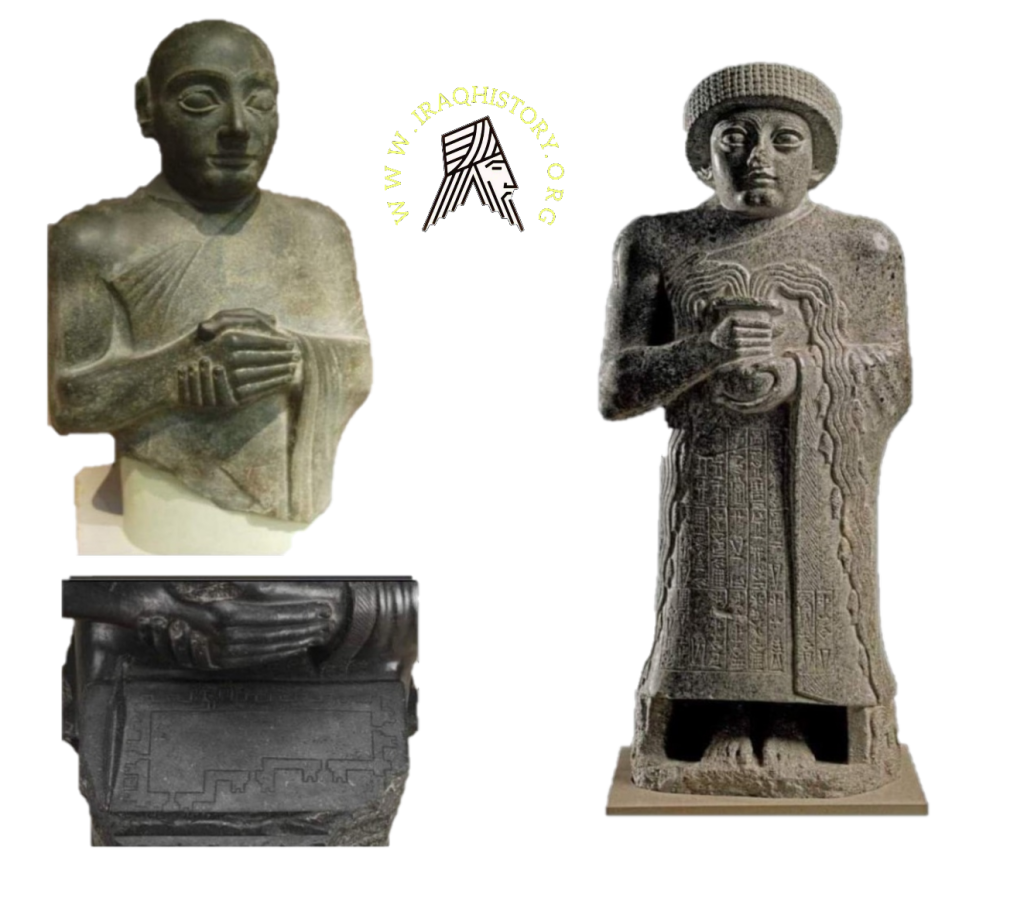
Prince Gudea he ruled over the kingdom of Lagash in Mesopotamia Iraq
Architect with Plan , Plan of the first sacred temple recorded in history Seated Gudea holding temple plan 2100 B.C.E.Look at his folded hands : this is a gesture of prayer . Gudea was very religious . Gudea had many temples built , where he put statues of himself One of them shows the prince seated Neo-Sumerian /Ur III period , The second statue of Cuodia holds a vessel of water that symbolizes the Tigris and Euphrates rivers.
Third Dynasty of Ur (2111-2003 B.C.)
and comprised five kings. The Third Dynasty of Ur was founded by Ur-Nammu
who ruled for more than a century (2111-2003 B.C.). Besides the great building activity which characterized this dynasty, it may claim other great achievements such as the restitution of Sumerian glory by the re-introduction of the Sumerian language and the preservation of traditional modes of worship and Sumerian ritual ceremonies. Literacy and intellectual prestige reached a great height and Ur became the most glorious city of the ancient Orient. Examples of antiquities from the time of this dynasty are shown at the end of the Sumerian Hall (Hall III)cutting short the reign of Utu-hengal, king of
Ur-Nammu 𒌨𒀭𒇉 (2111-2094 B.C.), extended his domination to most of the cities of Sumer and Akkad. The rest of his reign was devoted to the fulfilment of domestic tasks intended to consolidate the country’s unity, and no attempt was made to expand his conquests to neighboring states. The building of temples was the King’s privilege, and his name is associated with the Ziggurats, or staged towers, built of mud-bricks and covered with a thick skin of baked bricks. The ziggurat is composed another shrine at ground level. The whole structure stands in a large courtyard which several Storeys crowned with a small temple, withies surrounded by a sacred enclosure contain Ing chambers. The remains of these gigantic architectural undertakings can be seen in sites like Uruk or Nippur but the most impressive is that seen by visitors today at the city of Ur. He put his greatest effort into the building of this, the temple dedicated to Nanna, the moon-god of Ur, and he commemorated it on a red sandstone stele found at Ur. On it the king is depicted making an gesture of libation to Nanna, the moon-god of Ur, during the ceremony of the foundation stone of the ziggurat now standing at Ur.Ur-Nammu also promulgated the most ancient collection of laws yet discovered, ana
in the Iraq Museum there is a bronze statuette of Ur-Nammu standing barefoot and carrying on his head a basket of earth as a symbol of the foundation of a new temple.The reign of Ur-Nammu lasted 18 years after which his son Shulgi took up power.Shulgi (2093-2046 B.C. pursued the same policy as his father in building temples and ziggurats and in ordering social life and digging canals. There are several foundation


Ur Namma stele detail, Penn Museum
statuettes cast in bronze representing Shulgi carrying on his head a basket of earth to lay the ‘foundation stone’ for the erection of a new building or for the completion of those started by Ur-Nammu. However, he also led a series of military campaigns in the Zagros Mountains and during his reign Ashur acknowledged the suzerainty of Ur. Shulgi died after reigning forty-eight years and was succeeded upon the throne by his son Amar-Sin. Archaeologists have found at Ur an impressive tomb forking Shulgi which is composed of chambers in baked bricks.
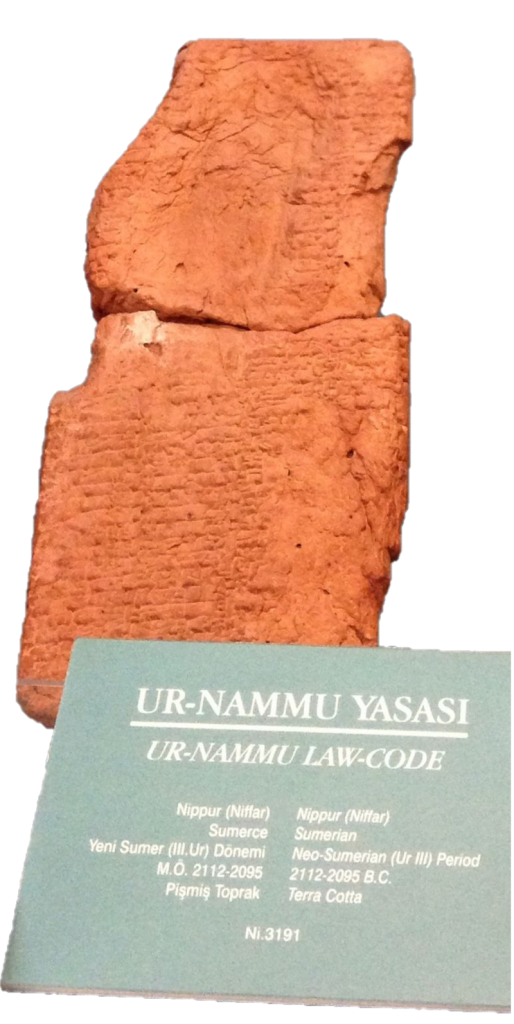
the laws covered both civil and criminal matters. Among criminal provisions it specifies which should be capital offences: murder, robbery, deflowering another man’s virgin wife, and adultery when committed by a woman. For other misdemeanors the penalty was a fine in silver… [Ur-Nammu’s code stands] in contrast to the more famous laws of Hammurabi, drafted some three centuries later, with its savage provisions of “an eye for an eye, a tooth for a tooth
If a man to a man with an instrument…his…the foot has cut off, 10 silver shekels he shall pay.
If a man to a man with a weapon his bones of…severed, 1 silver mina he shall pay.
If a man to a man with a geshpu-instrument the nose has cut off, 2/3 of a silver mina he shall pay. (Kramer, 55)
Shulgi 𒀭𒂄𒄀 :
of Ur was the second king of the Third Dynasty of Ur. He reigned for 48 years, from c. 2094 – c. 2046 BC His accomplishments include the completion of construction of the Great Ziggurat of Ur, begun by his father Ur-Nammu. On his inscriptions, he took the titles “King of Ur”, “King of Sumer and Akkad” and “King of the four corners of the universe
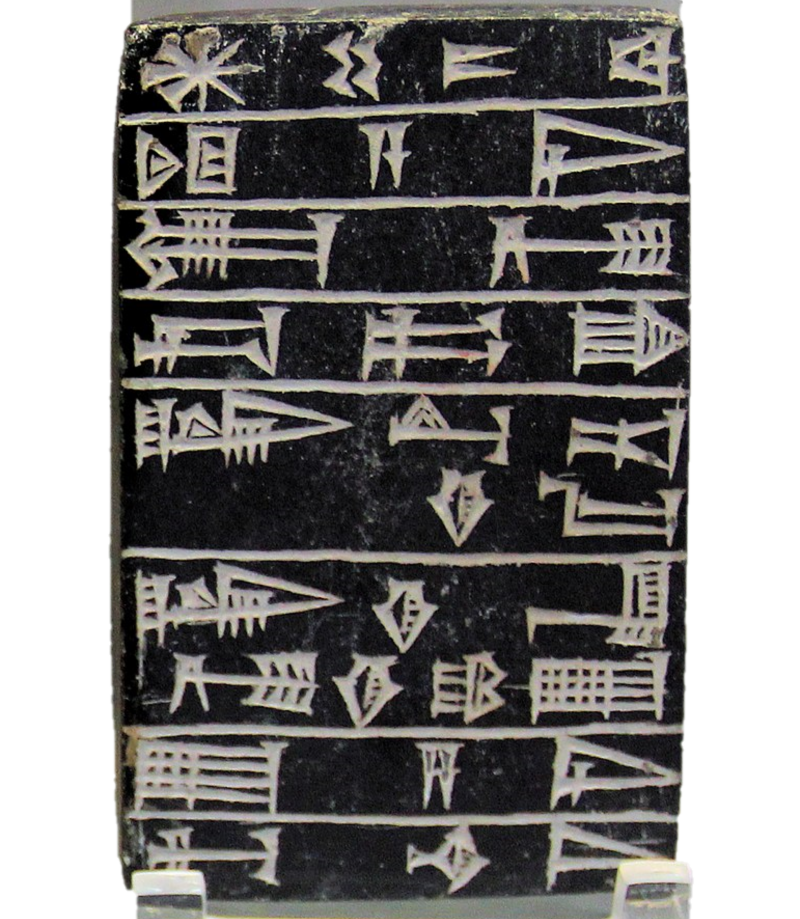
Foundation tablet Reign of Shulgi From the Temple in Ur
Amar-Sin (2045-2037 B.C.): the name is sometimes transcribed Amar-Su’ena and was formerly read Bur-Sin. When Amar-Sin came to power the country was enjoying peace and order which enabled him to maintain the policies of his father. The ruler of Ashur,Zariqum, was a contemporary of Amar-Sin and owed him allegiance. His reign lasted only nine years, after which he was succeeded by his son Shu-Sin.
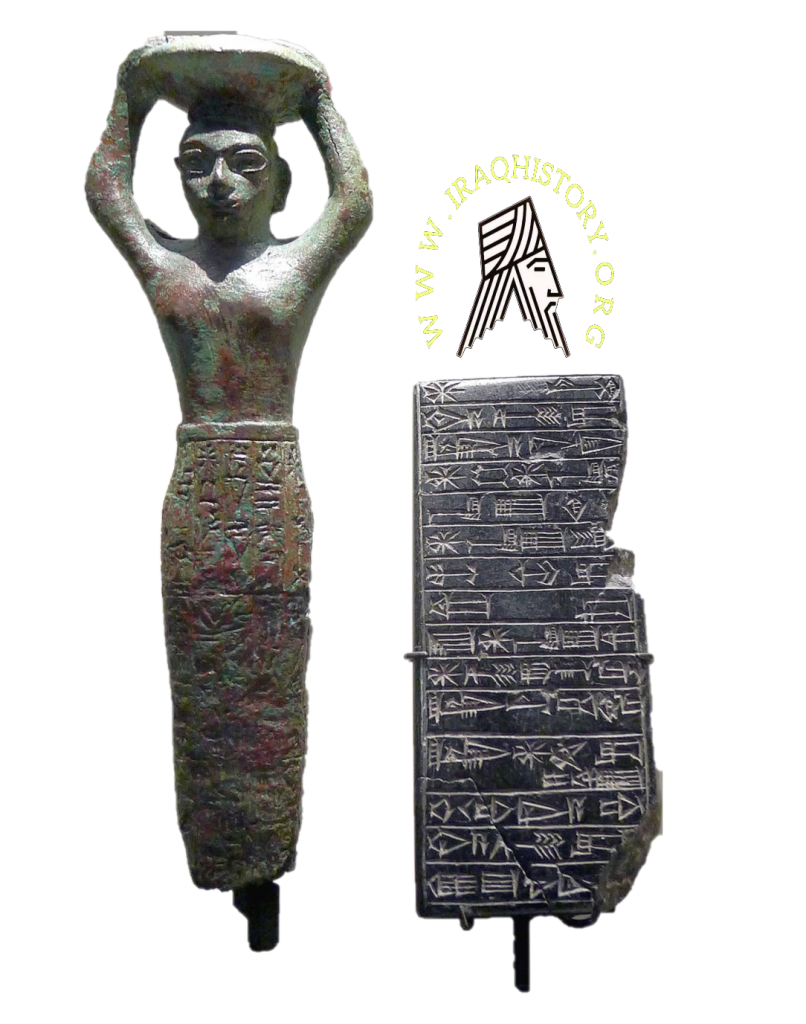
Amar-Sin 𒀭𒀫𒀭𒂗𒍪 King of Ur King of Sumer and Akkad King of the Four Corners
Shu-Sin 𒀭𒋗𒀭𒂗𒍪 (2036-2028 B.C.) held the throne for another nine years during which the Country began to suffer from the raids of Semitic tribes coming from Syria down the Euphrates, settling in the cities and countryside. Meanwhile Shu-Sin died and was succeeded by Ibbi-Sin.
ibbi-Sin (2027-2003 B.C.). the last king of the 3rd Dynasty of Ur, ruled for 25 years Which were spent in the struggle to crush in ternal dissension and check increased the country from Semitic incursions from Mari on the Middle Euphrates. In theme empire literally disintegrated and Ishbi-Erra proclaimed himself king in Isin
while with the assistance of the Elamites from the east, Naplanum was crowned in Larsa. The land of Ashur followed suit and gained independence. But the death-blow came from the Elamites who mustered a powerful army and attacked the great city of itself, taking it, sacking it, burning it down, and taking its king prisoner. The destruction of Ur was long remembered and lamented in psalms, and it marks the sad conclusion of the Neo-Sumerian Period (about 2003 B.C.), with which the era of the Sumerians came to an Enda
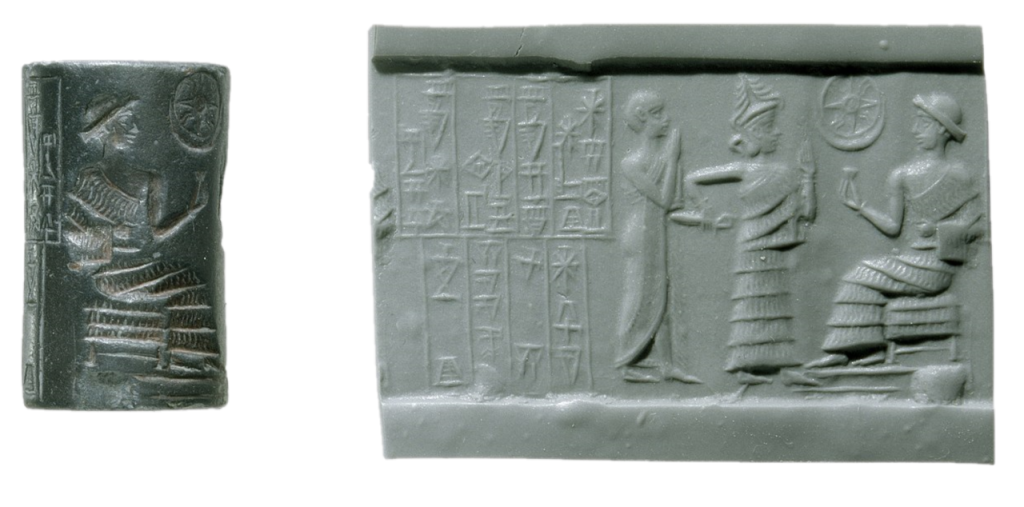
Sources :
Faraj Basmachi + Harvard University + British Museum + Iraqi Museum + Louvre Museum + University of Chicago


